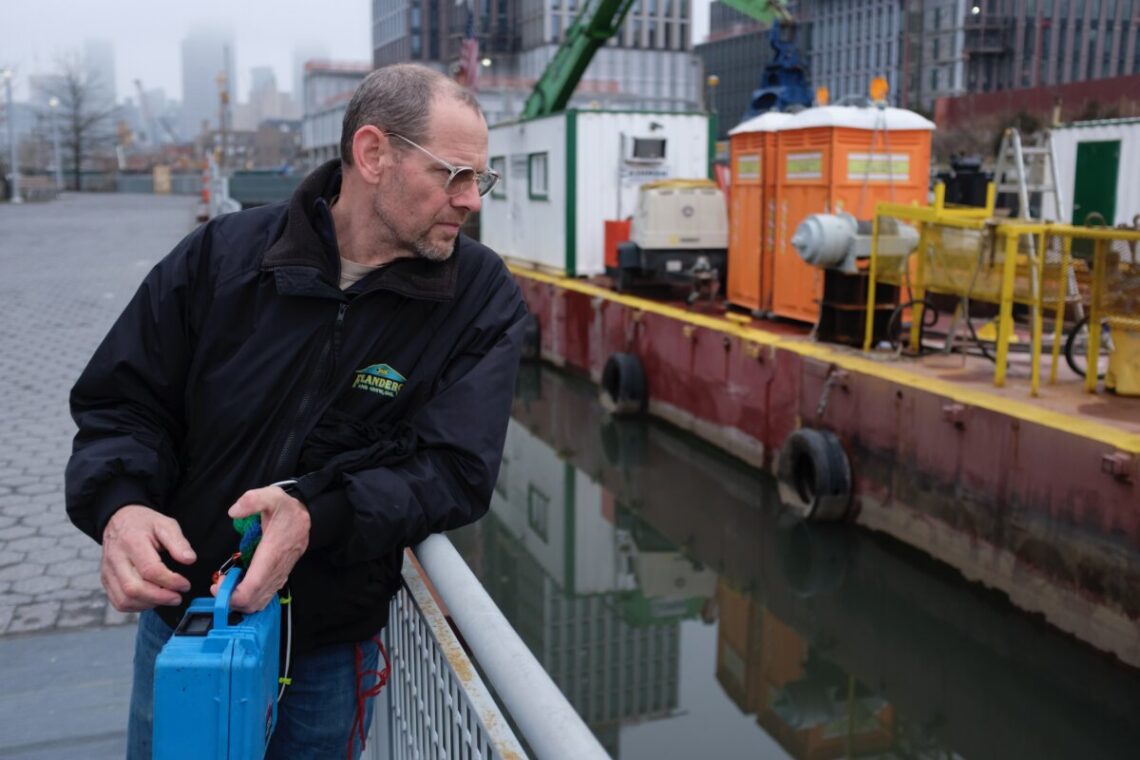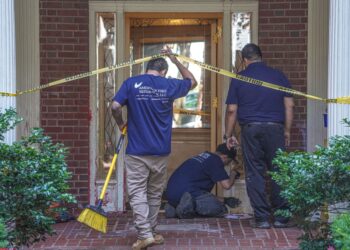It looks like it’s raining in Gowanus. It could be — the sky is sunless and gray, and rings form on the surface of the Gowanus Canal every so often — but it isn’t.
The cause of the rings is methane gas, released by decomposing organic material, which lies on the bottom of the canal. Dead plants make up some of it, but mostly, it’s human feces, which ends up in the canal during rain storms when the combined sewer system can’t handle the increased water flow.
“That’s from the latest sewage that came out. Every time there’s a big combined sewer overflow event, there’s like a fresh layer of stuff,” said Gary Francis, Gowanus resident of nearly 15 years, pulling five probes out of the water. Since August last year, he has monitored the canal almost daily to shed light on the health of one of the nation’s most polluted bodies of water.
Since Feb. 28, the canal has seen six combined sewer overflow events, and the odor emanating from the water provides ample evidence. At the top of the waterway where Douglass Street ends, the smell of raw sewage mixes with that of coal tar leaking into the canal from one of the Brownfield sites that lie alongside it.
While Francis, a scientist only by hobby, has observed and cared for the canal for many years — a necessity for someone who uses it for paddle boarding and canoeing — it was a singular, catastrophic event that spurred him into action.
Sewer overflow tanks water quality in the Canal
The morning after a thunderstorm passed over the city on July 14, residents of Gowanus woke up to tens of thousands of dead fish — primarily Atlantic menhaden, a tiny filter feeder whose resurgence in New York harbors in recent years is an important reason for the return of whales and dolphins, but also other species — floating on the surface of the canal. The cause was a nearly complete lack of dissolved oxygen in the water, which asphyxiated both fish and other aquatic life.
At below 5 mg/L,…
Read the full article here








